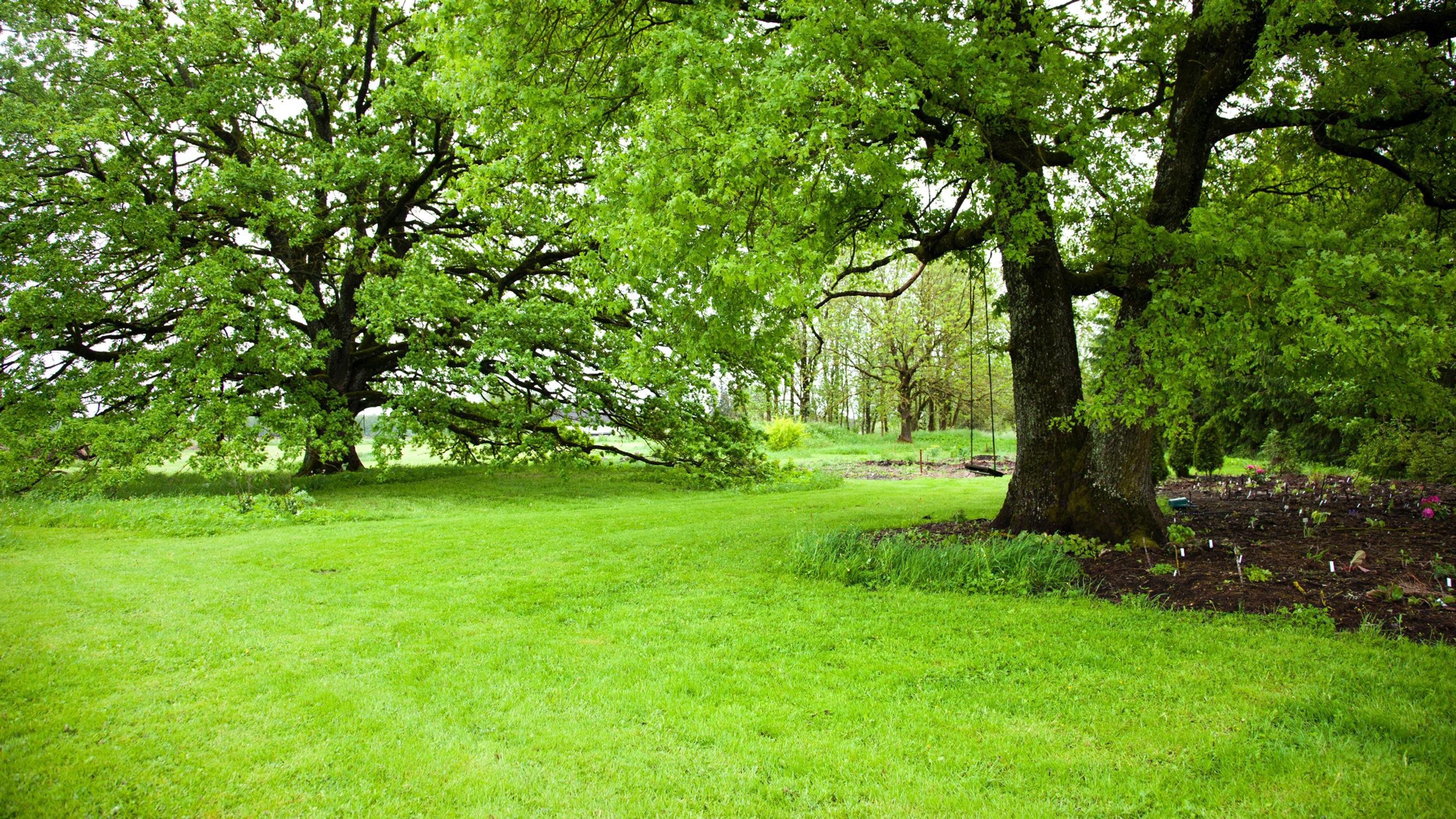
Lawn care—if you’re dreaming of a lush lawn, check out these tips!
A lawn needs regular maintenance to stay beautiful. Our lawn care maintenance tips—including mowing, a precise lawn care watering schedule, liming, and lawn care fertilization techniques—help keep your grass thriving.
Lawn care—your guide to success:
Mowing the lawn
- Mow regularly. The grass will grow shorter and denser the more often you mow it. Only remove one-third of its length at once. Cutting too much at once weakens its growth.
- Make mowing easy. Plan the shape of your lawn so that mowing goes smoothly without unnecessary reversing or maneuvering. A reel mower with well-sharpened blades gives you the best-looking finish. For a small lawn, a manual reel mower is enough.
- Protect the lawn. Let the lawn grow tall during dry periods if the grass must get by without watering. Taller grass protects the base and growing point of the plants, helping them stay green. Gradually return the cutting height to normal when the rain returns.
- Strengthen the lawn. Occasionally let it grow longer than normal to fortify the grasses and increase their drought tolerance. For instance, autumn is a good time to let it flourish and gain vigor. However, mow it to about five centimeters before winter and rake away the clippings. This helps prevent damage from winter fungi.
Watering the lawn
Decide during the lawn care establishment phase whether you plan to water it. If you want to save water, especially in sunny and dry locations, choose a drought-tolerant seed mix. Aeration boosts drought resistance, as roots can grow deep to find moisture in well-aerated, loose soil.
If you water the lawn, you can keep it short even through long dry spells. For effective lawn care, avoid cutting a drought-stressed lawn too short, as it may turn brown during dry weather. You can recognize a parched lawn by its faint bluish tone. Also, determine whether it needs water by stepping on it—if your footprint stays flattened, the lawn watering.


Fertilizing the lawn
- Give the lawn enough nitrogen. Watering, porous soil, and removing clippings all increase the lawn’s fertilizer needs. A nitrogen-starved lawn starts to thin out, allowing weeds to take over the open areas. Choose a slow-release spring fertilizer or feed the lawn multiple times throughout the summer. In addition to mineral fertilizers, you can use organic ones like chicken manure. Apply the fertilizer across the same area twice from different directions to ensure even coverage. Scatter the granules just before rain or water afterward.
- Quick help with liquid fertilizers. Liquid fertilizers work quickly because their nutrients are water-soluble and reach the roots when you water. For small areas, a watering can will do. There are also fertilizer canisters you can attach to a hose with a quick connector.
- Liming. Most lawn grasses do best in slightly acidic or neutral soil, with a pH of around 6–6.5. Wood ash is an excellent option for lawn care liming.
Green fertilization for the lawn
If you have a playing field in your garden, it’s best not to sow white clover there, since it will get slimy when wet and stain clothing. However, clover is perfect for a natural-style garden because it attracts pollinating insects. Because it’s a nitrogen-fixing legume, a clover lawn can manage without extra fertilizer. Clover also has the benefit of being low-maintenance and reasonably shade-tolerant.
Leaving part of the lawn to grow wild will also boost your garden’s biodiversity. Tall grass creates shelter for the natural enemies of pests.
Should I always rake my lawn?
Raking the lawn is a crucial part of lawn care, as it removes dead grass. Whether that layer is problematic depends on the conditions. Sometimes it forms a thick, dense mat that suffocates roots. In such situations, raking is beneficial.
Whether you need to rake up tree leaves also depends on your lawn. In healthy soil, earthworms pull leaf fragments underground. If in the past you’ve always raked away every leaf, begin by leaving a thin layer on the lawn. Spread leaves from around trees across the garden so there’s a light mulch everywhere. Especially in a long, mild autumn, earthworms tirelessly break down the leaves and carry them into their tunnels. Shredding the leaves with a mower helps them decompose even faster.


